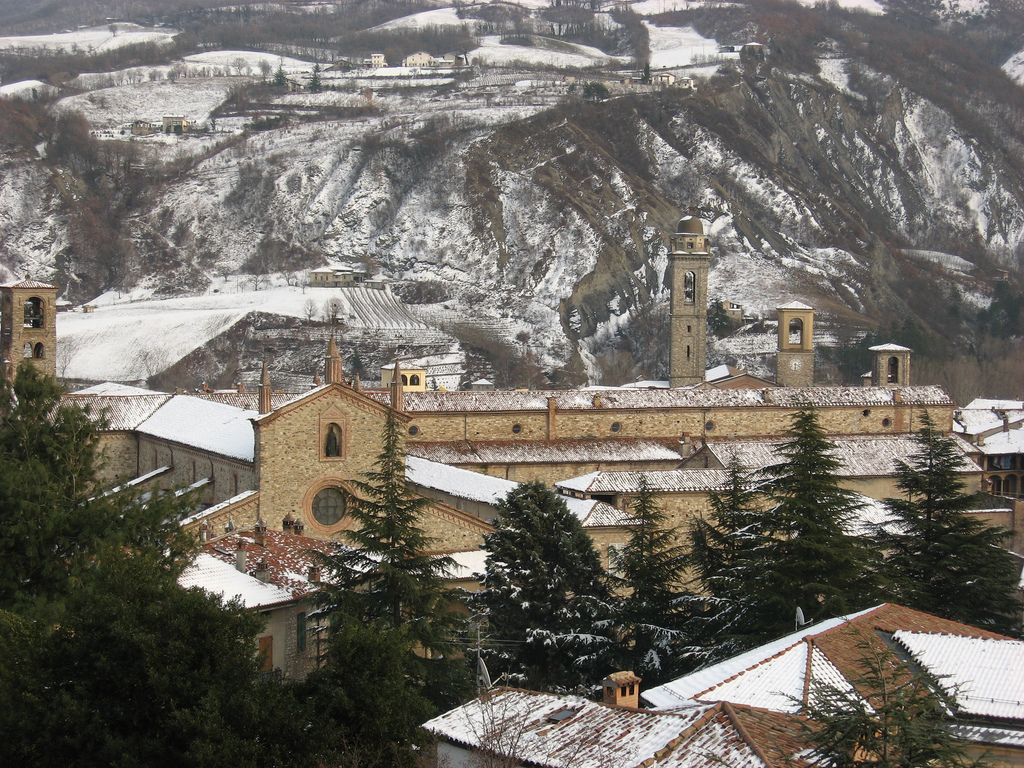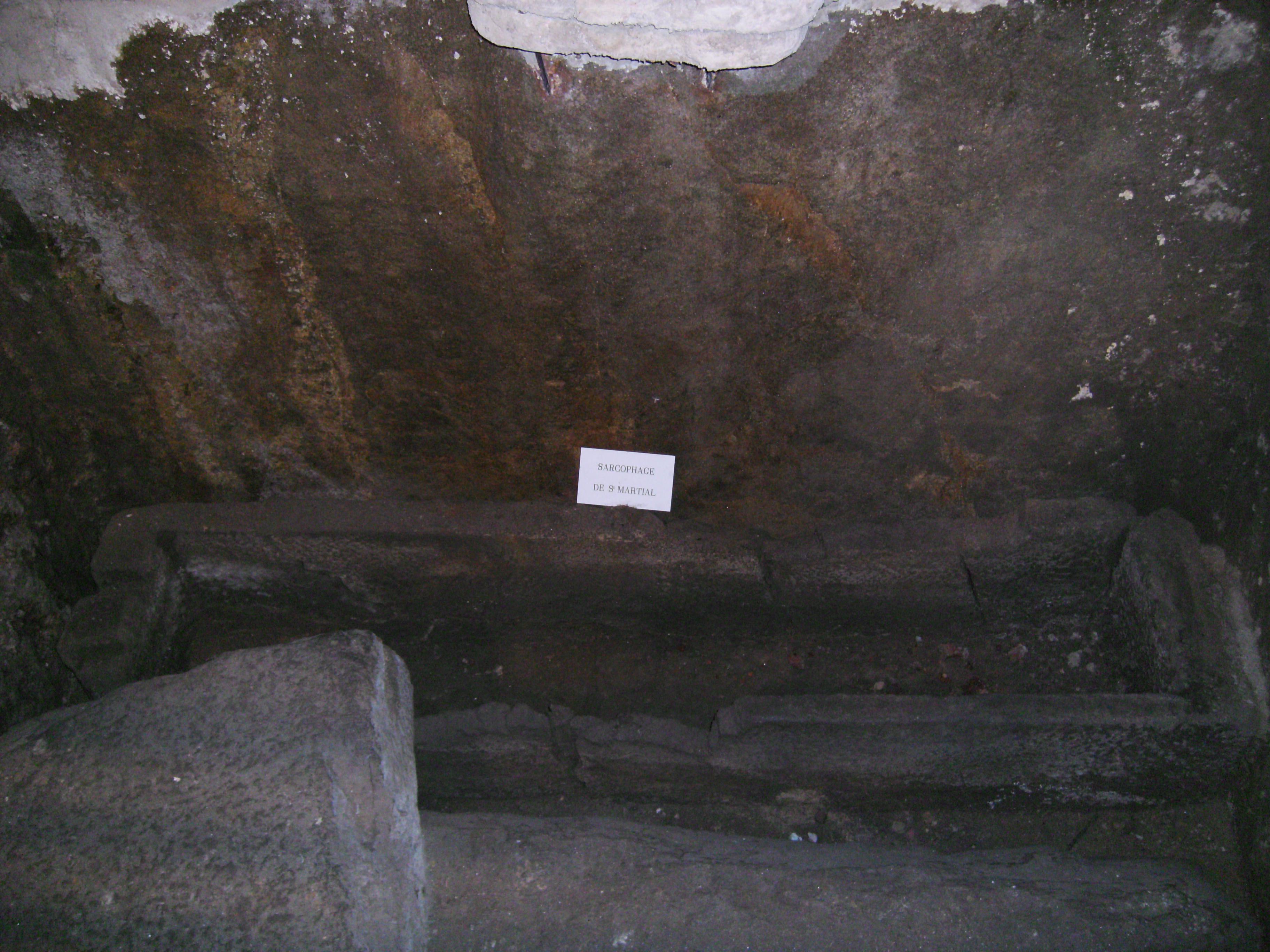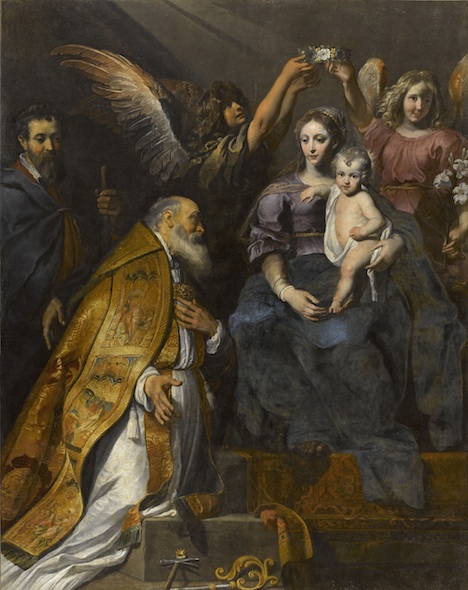|
Saint Aurea Of Paris
Aurea of Paris; (died 666; French: ''Sainte Aure''), venerated as Saint Aurea of Paris, was an abbess of Saint Martial in Paris in the seventh century. Dagoburt I and Clovis II ruled at the time. Her feast day was originally the 4th October, however, this was transferred to the 5th October following the veneration of St Francis of Assisi. Narrative She appears in works by two writers, St Ouen and Jonas of Bobbio, in their hagiography (saint's life stories) of St Eligius and St Eustace. Both writers state that she was an immigrant to Paris from Syria Syria ( ar, سُورِيَا or سُورِيَة, translit=Sūriyā), officially the Syrian Arab Republic ( ar, الجمهورية العربية السورية, al-Jumhūrīyah al-ʻArabīyah as-Sūrīyah), is a Western Asian country loc .... When around 632 Eligius, by the liberality of King Dagobert, settled at Paris a nunnery of three hundred virgins, he appointed Aurea abbess. [...More Info...] [...Related Items...] OR: [Wikipedia] [Google] [Baidu] |
Saint Martial
Saint Martial (3rd century), called "the Apostle of the Gauls" or "the Apostle of Aquitaine", was the first bishop of Limoges. His feast day is 30 June. Life There is no accurate information as to the origin, dates of birth and death, or the acts of this bishop. According to Gregory of Tours, during the time of the Emperors Decius Pope Fabian sent out seven bishops from Rome to Gaul to preach the Gospel: Gatien to Tours, Trophimus to Arles, Paul to Narbonne, Saturnin to Toulouse, Denis to Paris, Austromoine to Clermont, and Martial to Limoges. He succeeded in converting the inhabitants to Christianity, and his memory has always been venerated there.Clugnet, Léon. "St. Martial." The Catholic Encyclopedia Vol. 9. New York: Robert Appleton Company, 1910. 10 January 2016 Abbey ...[...More Info...] [...Related Items...] OR: [Wikipedia] [Google] [Baidu] |
Paris
Paris () is the capital and most populous city of France, with an estimated population of 2,165,423 residents in 2019 in an area of more than 105 km² (41 sq mi), making it the 30th most densely populated city in the world in 2020. Since the 17th century, Paris has been one of the world's major centres of finance, diplomacy, commerce, fashion, gastronomy, and science. For its leading role in the arts and sciences, as well as its very early system of street lighting, in the 19th century it became known as "the City of Light". Like London, prior to the Second World War, it was also sometimes called the capital of the world. The City of Paris is the centre of the Île-de-France region, or Paris Region, with an estimated population of 12,262,544 in 2019, or about 19% of the population of France, making the region France's primate city. The Paris Region had a GDP of €739 billion ($743 billion) in 2019, which is the highest in Europe. According to the Economist Intelli ... [...More Info...] [...Related Items...] OR: [Wikipedia] [Google] [Baidu] |
Dagobert I
Dagobert I ( la, Dagobertus; 605/603 – 19 January 639 AD) was the king of Austrasia (623–634), king of all the Franks (629–634), and king of Neustria and Burgundy (629–639). He has been described as the last king of the Merovingian dynasty to wield any real royal power. Dagobert was the first of the Frankish kings to be buried in the royal tombs at Saint Denis Basilica. Rule in Austrasia Dagobert was the eldest son of Chlothar II and Haldetrude (575–604) and the grandson of Fredegund. Chlothar had reigned alone over all the Franks since 613. In 622, Chlothar made Dagobert king of Austrasia, almost certainly to bind the Austrasian nobility to the ruling Franks. As a child, Dagobert lived under the care of the Carolingian dynasty forebears and Austrasian magnates, Arnulf of Metz and Pepin of Landen. Chlothar attempted to manage the unstable alliances he had with other noble families throughout much of Dagobert's reign. When Chlothar granted Austrasia to Dagobert, he ... [...More Info...] [...Related Items...] OR: [Wikipedia] [Google] [Baidu] |
Clovis II
Clovis II (633 – 657) was King of Neustria and Burgundy, having succeeded his father Dagobert I in 639. His brother Sigebert III had been King of Austrasia since 634. He was initially under the regency of his mother Nanthild until her death in her early thirties in 642. Nanthild's death allowed Clovis to fall under the influence of the secular magnates, who reduced the royal power in their own favour; first Aega and then Erchinoald. The Burgundian mayor of the palace Flaochad used him to lure his rival, Willebad, to a battle in Autun, where Willebad was killed. Background Clovis' wife, Balthild, whose Anglo-Saxon origins are now considered doubtful, was sold into slavery in Gaul. She had been owned by the Neustrian mayor of the palace, Erchinoald, who gave her to him to garner royal favour. She bore him three sons who all became kings after his death. The eldest, Chlothar, succeeded him and his second eldest, Childeric, was placed on the Austrasian throne by Ebroin whil ... [...More Info...] [...Related Items...] OR: [Wikipedia] [Google] [Baidu] |
Calendar Of Saints
The calendar of saints is the traditional Christian method of organizing a liturgical year by associating each day with one or more saints and referring to the day as the feast day or feast of said saint. The word "feast" in this context does not mean "a large meal, typically a celebratory one", but instead "an annual religious celebration, a day dedicated to a particular saint". The system arose from the early Christian custom of commemorating each martyr annually on the date of their death, or birth into heaven, a date therefore referred to in Latin as the martyr's ''dies natalis'' ('day of birth'). In the Eastern Orthodox Church, a calendar of saints is called a '' Menologion''. "Menologion" may also mean a set of icons on which saints are depicted in the order of the dates of their feasts, often made in two panels. History As the number of recognized saints increased during Late Antiquity and the first half of the Middle Ages, eventually every day of the year ... [...More Info...] [...Related Items...] OR: [Wikipedia] [Google] [Baidu] |
Francis Of Assisi
Giovanni di Pietro di Bernardone, better known as Saint Francis of Assisi ( it, Francesco d'Assisi; – 3 October 1226), was a mystic Italian Catholic friar, founder of the Franciscans, and one of the most venerated figures in Christianity. He was inspired to lead a life of poverty and itinerant preaching. Pope Gregory IX canonized him on 16 July 1228. He is usually depicted in a robe with a rope as belt. In 1219, he went to Egypt in an attempt to convert the sultan al-Kamil and put an end to the conflict of the Fifth Crusade. In 1223, he arranged for the first Christmas live nativity scene. According to Christian tradition, in 1224 he received the stigmata during the apparition of a Seraphic angel in a religious ecstasy. He founded the men's Order of Friars Minor, the women's Order of St. Clare, the Third Order of St. Francis and the Custody of the Holy Land. Once his community was authorized by the Pope, he withdrew increasingly from external affairs. Francis ... [...More Info...] [...Related Items...] OR: [Wikipedia] [Google] [Baidu] |
Audoin (bishop)
Audoin (AD 609 – on 24 August 684; also spelled ''Audoen'', ''Ouen'', ''Owen''; la, Audoenus; known as Dado to contemporaries) was a Frankish bishop, courtier, hagiographer and saint. Life Audoin came from a wealthy aristocratic Frankish family who held lands in the upper Seine and Oise valleys. His father was Saint Authaire (Audecharius). Audoin was a first cousin of Agilbert, bishop of the West Saxons. He spent his childhood at Ussy-sur-Marne, and was then sent to be educated at the Abbey of Saint-Médard de Soissons. From there he went to the court of Chlothar II (d.629), where training both military and literary was given to young noblemen, he served Dagobert I as one of his referendaries (administrators). [...More Info...] [...Related Items...] OR: [Wikipedia] [Google] [Baidu] |
Jonas Of Bobbio
Jonas of Bobbio (also known as Jonas of Susa) (Sigusia, now Susa, Italy, 600 – after 659 AD) was a Columbanian monk and a major Latin monastic author of hagiography. His ''Life of Saint Columbanus'' is "one of the most influential works of early medieval hagiography."O'Hara, Alexander. ''Jonas of Bobbio and the Legacy of Columbanus'', Oxford Studies in Late Antiquity (New York) Biography  Jonas was born in
Jonas was born in
|
Saint Eligius
Saint Eligius (also Eloy, Eloi or Loye; french: Éloi; 11 June 588 – 1 December 660 AD) is the patron saint of goldsmiths, other metalworkers, and Coin collecting, coin collectors. He is also the patron saint of veterinarians, the Royal Electrical and Mechanical Engineers (REME), a corps of the British Army, but he is best known for being the patron saint of horses and those who work with them. Eligius was chief counsellor to Dagobert I, Merovingian king of France. Appointed the bishop of Noyon-Tournai three years after the king's death in 642, Eligius worked for 20 years to convert the Paganism, pagan population of Flanders to Christianity. Biography Eligius was born at the villa of Captelat, six miles north of Limoges, in Aquitaine (now France), into an educated and influential Gallo-Roman family. His father, recognising unusual talent in his son, sent him to the goldsmith Abbo, master of the mint at Limoges. Later Eligius went to Neustria, the palace of the Franks, where h ... [...More Info...] [...Related Items...] OR: [Wikipedia] [Google] [Baidu] |
Saint Eustace
Saint Eustace (Latinized Eustachius or Eustathius, Greek Εὐστάθιος Πλακίδας ''Eustathios Plakidas'') is revered as a Christian martyr. According to legend, he was martyred in AD 118, at the command of emperor Hadrian. Eustace was a pagan Roman general, who converted to Christianity after he had a vision of the cross while hunting. He lost all his wealth, was separated from his wife and sons, and went into exile in Egypt. Called back to lead the Roman army by emperor Trajan, Eustace was happily reunited with his family and restored to high social standing, but after the death of Trajan, he and his family were martyred under Hadrian for refusing to sacrifice to pagan Roman gods. Eustace was venerated in the Byzantine Church from at least the 7th century. His veneration is attested for the Latin Church for the 8th century, but his rise to popularity in Western Europe happened in the high medieval period, during the 12th to 13th centuries. There are many vers ... [...More Info...] [...Related Items...] OR: [Wikipedia] [Google] [Baidu] |
Syria
Syria ( ar, سُورِيَا or سُورِيَة, translit=Sūriyā), officially the Syrian Arab Republic ( ar, الجمهورية العربية السورية, al-Jumhūrīyah al-ʻArabīyah as-Sūrīyah), is a Western Asian country located in the Eastern Mediterranean and the Levant. It is a unitary republic that consists of 14 governorates (subdivisions), and is bordered by the Mediterranean Sea to the west, Turkey to the north, Iraq to the east and southeast, Jordan to the south, and Israel and Lebanon to the southwest. Cyprus lies to the west across the Mediterranean Sea. A country of fertile plains, high mountains, and deserts, Syria is home to diverse ethnic and religious groups, including the majority Syrian Arabs, Kurds, Turkmens, Assyrians, Armenians, Circassians, Albanians, and Greeks. Religious groups include Muslims, Christians, Alawites, Druze, and Yazidis. The capital and largest city of Syria is Damascus. Arabs are the largest ethnic group, and Mu ... [...More Info...] [...Related Items...] OR: [Wikipedia] [Google] [Baidu] |







